Search Results
Back to JTS Torah Online's Main page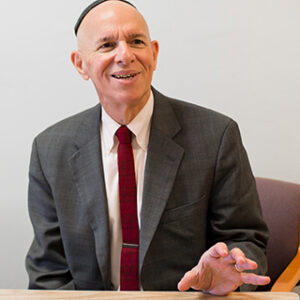
A Nation with Priests
Apr 30, 2010 By Alan Cooper | Commentary | Emor
Many Conservative synagogues no longer distinguish between members who claim descent from the priestly castes (kohen, levi) and ordinary Jews (yisra’el). The priestly blessing is recited by whoever happens to be leading the prayer service; the first two aliyot to the Torah are handed out democratically and dubbed rishon/sheni (“first/second”) instead of kohen/levi. Nevertheless, it is important to keep the old distinctions in mind as we read biblical priestly law in general and Parashat Emor in particular. Distinctions between priests and their fellow Israelites, like those between Israel and the nations, are fundamental to the biblical concept of holiness.
Read More
Developing True Leadership
May 9, 2009 By Matthew Berkowitz | Commentary | Emor
Ten years ago, when I began teaching for The Jewish Theological Seminary, I had the honor of teaching in the office of a prominent New York businessman who would go on to become a political visionary and leader. When I was introduced to this executive as “Rabbi” Matthew Berkowitz, he responded by wagging his finger at me, remarking, “You people [read: clergy] are responsible for every conflict in this world.” Though taken aback by his opening salvo, I composed myself and responded, “With all due respect, the problem is not the message but the messenger; and you have yet to meet a good messenger.” While I was proud of my comeback, I also understood the rationale and frustration underlying his comment.
Read More
The Gift of Uncertainty
May 13, 2006 By Matthew Berkowitz | Commentary | Emor
Israel is a land almost wholly dependent on the heavens above. As such, concern for one’s crops is a dominant theme through the biblical and rabbinic periods. Far from being a land irrigated by a river flowing through its length as Egypt, Israel is dependent on the rains above — and the winds below. Accordingly, this week’s Parashat Emor delineates the calendar year and very specifically addresses the period in which we find ourselves — the counting of the Omer from Passover to Shavu’ot.
Read MoreThe Tragedy of Rabbi Akiva’s Students
May 13, 2006 By Michael Singer | Commentary | Emor
Have you ever wondered about this mysterious time in the Jewish calendar called the sefirah, in which we count the omer? In particular, why do we mourn as a people? Traditionally, there are no weddings or haircuts until Lag Ba’omer (the thirty–third day of the omer). And of course don’t forget those itchy sefirah beards.
Read More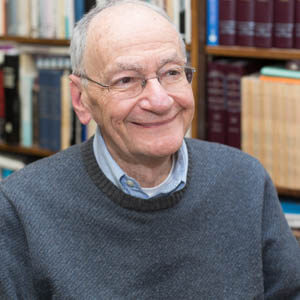
Claiming Our Spiritual Freedom
May 14, 2005 By Ismar Schorsch | Commentary | Emor
The laws of the Torah are rooted in the exodus from Egypt.
Read More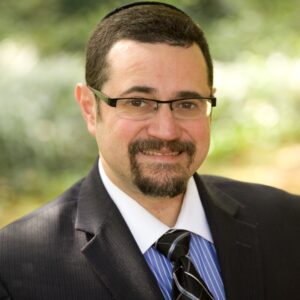
The Continuing Revelation
May 8, 2004 By Joshua Heller | Commentary | Emor
“What did he know, and when did he know it?” seems to be a particularly current question, but it can be effective in exploring the meaning of ancient texts as well. When applied to this week’s parashah – Emor, it helps provide a rare insight into the process of revelation and the evolution of Jewish law. Was revelation limited to one flash of prophetic vision and forty days of fast and furious dictation atop Mount Sinai or was it a process that took place over months and years?
Read More
Sharing Our Blessings
May 8, 2004 By Matthew Berkowitz | Commentary | Emor
Traditional rabbinic thought argues that words of Torah are never superfluous. There is a distinct economy in the way that words are employed. And so, when we encounter repetition, Torah is coming to teach us something unique. The challenge for us, as readers, is to understand the import of repetition. Parashat Emor offers us one such opportunity. Although the law of pe’ah, leaving one corner of the field to the poor, is legislated a few chapters earlier in Parashat K’doshim (Leviticus 19:9), it is placed this week in a list of festivals. What is the significance of restating such law in the midst of our parashah?
Read More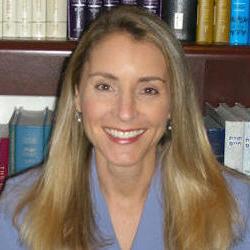
Sacred History
May 17, 2003 By Lauren Eichler Berkun | Commentary | Emor
As we stand in the midst of Sefirat Ha-Omer, the period of counting 49 days from Pesach to Shavuot, we read the very parashah which contains the instructions for this count. Parashat Emor teaches:
Read More“From the day on which you bring the sheaf of elevation offering–the day after the sabbath–you shall count off seven weeks. They must be complete: you must count until the day after the seventh week–fifty days; then you shall bring an offering of new grain to the Lord” (Lev. 23:15).

From Gleaning to Tzedakah
May 10, 2003 By Ismar Schorsch | Commentary | Emor
Words often conceal the origins of the idea they denote. Etymology and meaning diverge and thus confound. A good example relates to a halakhic fragment in this week’s parasha. I refer to the verb “to glean.” The word denotes minimal gain through hard work. Basically an agricultural term, it conjures up an image of beggars at harvest time gathering whatever remains in the field after reaping. From there the meaning expands to any activity, physical or mental, that involves collecting painstakingly individual items of the same order from disparate quarters.
Read More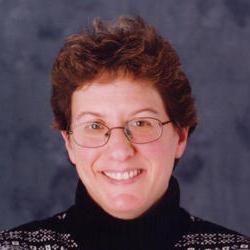
Rachel’s Tears
May 10, 2003 By Melissa Crespy | Commentary | Emor | Yom Hazikaron-Yom Ha'atzma'ut
It is hard not to be moved by the verses in our parashah which say that when a sheep or goat is born, it shall stay seven days with its mother, and that “no animal from the herd or from the flock shall be slaughtered on the same day as its young.” (Leviticus 22:28) Though few of us are close to sheep or goats, we are sensitized to the feelings of animals from our loving relationships with our pets, and we feel the sensitivity the Torah holds for the sheep and goats, even though they are destined to become food for humans or sacrifices for God.
Read More
Kindling the Light of Torah
May 12, 2001 By Matthew Berkowitz | Commentary | Emor
This past week the JTS community gathered together to celebrate the completion of the Kripke Tower. This magnificent tower blesses JTS with more classroom space, a state–of–the–art music studio and language lab, and a video conferencing center which will serve the needs of students, faculty and staff. Even the entryway conveys a message of mutuality, as light from outside filters through the glass breezeway, while light from the interior courtyard reflects back out to the street. One final detail of architectural insight will crown the Kripke Tower when it is officially dedicated in just under two weeks. As JTS enhances its capacity to spread its message of Torah and mitzvot throughout the Jewish world, an everlasting light (ner tamid) will be lit at the top of the tower guarding over JTS.
Read More
The Origins of Sacrifice
May 13, 2000 By Ismar Schorsch | Commentary | Emor
When our three children were still quite young, we did not hesitate to let them masquerade for Halloween and go out to “trick or treat.” For security reasons, we would often go with them. Part of the evening’s fun was handing out the candy at our own door to those who came seeking a treat. The Orthodox day school which our children attended at the time frowned on the practice by insisting that Halloween was once a Christian religious holiday. The sudden display of pedanticism always amused me because what was left of Halloween in our day is utterly bereft of any sacred content. Like Valentine’s Day, it had been completely desacralized, and most American Jews participated in the joy of both days in some fashion. Time had severed the modern secular meaning of each from its medieval religious moorings. The Orthodox assault was not driven by a sudden appreciation for critical scholarship but by an overriding concern for keeping Jews socially apart as much as possible.
Read More
Fulfilling the Commandments
May 1, 1999 By Ismar Schorsch | Commentary | Emor
Piety and morality diverged once again recently when Rabbi Hertz Frankel, the English studies principal of Beth Rachel (the network of Satmar girls’ schools in the Brooklyn neighborhood of Williamsburg), pleaded guilty to embezzling more than six million dollars of public funds over nearly two decades for the welfare of his employer. Despite a light sentence –– three years of unsupervised probation and a fine of one million dollars on Beth Rachel –– Rabbi Frankel was unrepentant. “The end justifies the means,” he told the New York Times, which I take to mean that he believed the Jewish children in his care were more deserving of the money than the non–Jewish children, no less impoverished and deprived, who lived in his school district.
Read More
Israel’s Destiny
May 16, 1998 By Ismar Schorsch | Commentary | Emor | Lag Ba'omer
Jews mark the period between the festivals of Passover and Shavuot by the counting of the omer. For a period of 49 days, beginning on 16 Nisan, for us in the diaspora the night of the second Seder, we count each day at the evening service (the start of a new day in the Jewish calendar) in terms of the days and weeks that have passed. This brief ceremony opens with the verse in this week’s parasha that sets forth the prescription: “And from the day on which you bring the sheaf of elevation – the day after the sabbath – you shall count off seven weeks. They must be complete: you must count until the day after the seventh week – fifty days (Leviticus 23:15–16).”
Read More
Finding Sanctity in Community
May 17, 1997 By Ismar Schorsch | Commentary | Emor
In Judaism certain religious acts require a minyan. We do not chant from the Torah scroll or recite a haftara without a quorum. For a cantor to lead services that include the recitation of the blessing barkhu or the kedusha in the amida or a mourner’s kaddish likewise needs the presence of a minyan. So does a wedding. Moments of peak sanctity call for community. We attain a sense of God’s concern by entering a space filled with kindred souls. In public worship, Jews past and present are united to in fuse us with the spiritual power to reach for the transcendent.
Read More
Death and Life
May 4, 1996 By Ismar Schorsch | Commentary | Emor
Death has been a frequent visitor this year at the Seminary, felling young and old alike, as if the assassination of Mr. Rabin on November 4 was a harbinger of things to come. Rarely have young people, so sheltered from death in our self–indulgent society, been more sorely tested. Some of the deceased, like Professors Shraga Abramson, Moshe Davis and Cantor Max Wohlberg, died in old age after long careers of lasting achievement, both in Israel and in America, including many years of teaching at the Seminary. Others were cut down in the prime of life: Professor Seth Brody, a graduate of our Rabbinical School and frequent visiting member of our faculty, by cancer, at the height of his powers, just a few years after attaining a full–time appointment at Haverford College, and Matt Eisenfeld, a second year rabbinical student at the Seminary, and his fiancee to be, Sara Duker, a graduate of Barnard College and active member of the Seminary community, by a suicide bomber on February 25 in Jerusalem, denying the world the fulfillment of their radiant promise.
Read More
The Sanctity of the Land
Apr 30, 1994 By Ismar Schorsch | Commentary | Emor | Pesah | Shavuot | Sukkot
At the new Jewish Museum one can feast on the panorama of Jewish history in a single spectacular, permanent exhibition, subtly conceived and brilliantly executed. It opens with a replica of an ancient agrarian calendar found in 1908 at Gezer, northwest of Jerusalem in the Shefela region. Written in good biblical Hebrew, the calendar seems to date from the 10th century B.C.E., coinciding with the reign of Solomon, when Gezer became part of the expanding monarchy of Israel. The calendar may not be anything more than a mnemonic ditty for children, and yet it is a cultural artifact of rich significance.
Read More
Emor
Jan 1, 1980
1 The Lord said to Moses: Speak to the priests, the sons of Aaron, and say to them:
None shall defile himself for any [dead] person among his kin, 2 except for the relatives that are closest to him: his mother, his father, his son, his daughter, and his brother; 3 also for a virgin sister, close to him because she has not married, for her he may defile himself.
Read More
SUBSCRIBE TO TORAH FROM JTS
Our regular commentaries and videos are a great way to stay intellectually and spiritually engaged with Jewish thought and wisdom.




